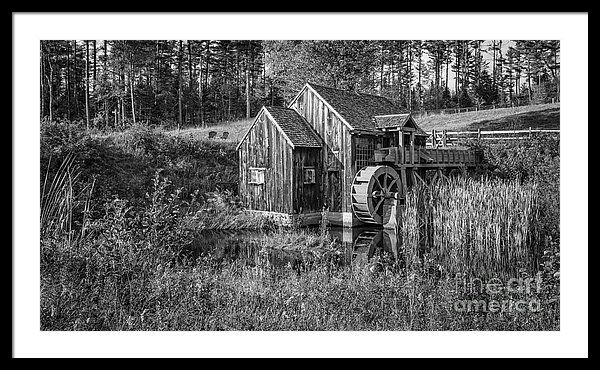Grist Mills – Before flour came in convenient sized bags and in a zillion versions like wheat, whole-wheat, bleached, gluten-free, rye, potato, rice, pastry, corn meal etc.
In the old days you had to grown your own grain, harvest it, dry it, separate the grain from the plant and take it to the local grist mill to have it ground into flour bay a water powered contraption between two giant stone disks called mill stones. How much stone dust do you think people back then ate?
A gristmill (also: grist mill, corn mill or flour mill) grinds grain into flour. The term can refer to both the grinding mechanism and the building that holds it.
Whole communities sprang up around the available water sources and grist mills were such an important part of every day life that many have survived today and even more mill stones are around decorating people gardens or used as front steps.
Here is a collection of some of the mills I’ve photographed around New England.

Located on Granby Road (just off Route 102) in Guildhall, Vermont, the Old Guildhall Grist Mill. In Guildhall was the Bailey Grist Mill was built below what is reputed to be the first wing dam built in the Connecticut. It was in operation until 1844. According to a petition submitted by one Enoch Bartlett to the Council and Representatives of the State of New Hampshire in 1780, the iron work, mill stones, gears, and other building materials, were plundered from a mill located on Dean Brook in Northumberland and transported across the Connecticut River for use in the Bailey mill.
More photographs of old grist mills from around New England can be found on Edward M. Fielding’s online portfolio of fine art photographs from around New England and beyond – https://edward-fielding.pixels.com/art/mill